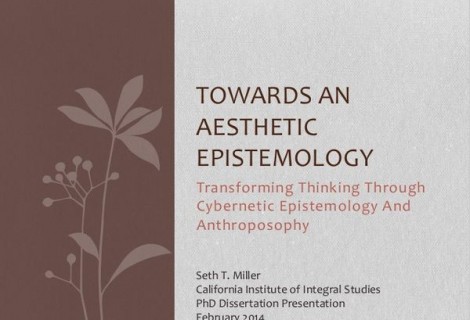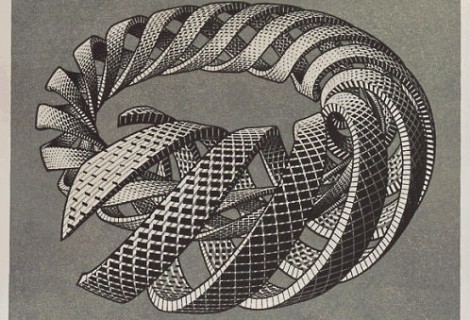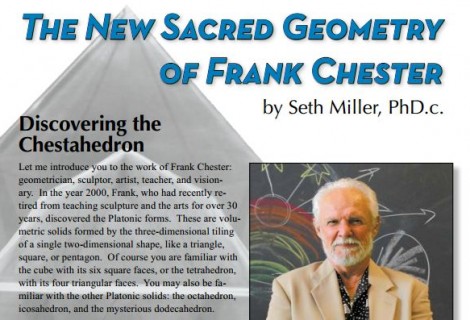Alchemy and narcissistic, reproductive, and creative learning
Alfonso Montuori, one of my professors at CIIS, has identified three styles, or modes, of learning, which he calls the narcissistic, the reproductive, and the creative.
From his article, The Quest for a New Education, From Oppositional Identities to Creative Inquiry, narcissistic learning is “an approach to education that sees the source of knowledge as inside the knower. It focuses on the expression of the knower’s experience and interiority and his or her personal growth and transformation.” (Montuori, Quest: p5)
Reproductive learning, by contrast, is “an approach to education that sees the source of knowledge as almost exclusively outside the knower, and focuses on the accurate reproduction of that knowledge by the knower.” (Montuori, Quest: p5)
Creative learning is a middle path, “an approach that views inquiry as a creative process.” (Montuori, Quest: p5)
I see a correspondence with Montuori’s categories and those of the alchemical tradition and the anthroposophical tradition. Alchemically, what Montuori describes as reproductive, creative, and narcissistic learnings are embodied in the principles of Salt, Mercury, and Sulfur. The Salt principle is one which is observable when you have a solution out of which a precipitate falls. The process is ruled by Gravity and tends to result in innumerable discrete bits with a greater density than the original solution. The precipitate literally ‘falls out’ of the continuously interconnected fluid mass to become something distinct, something identifiable and separate. Alchemically, the Salt process produces forms which have Earth characteristics. This describes the process of reproductive learning as an exact analogue: more of the same. Specific bits of information carry the value in reproductive learning, to the detriment of the interconnectedness of the facts when they were ‘in solution’. It is a strange irony that reproductive learning has most strongly co-opted the very metaphor that exemplifies the state of being inextricably contextually connected and turned it into its rally cry: “Solve!” The word ‘solve’ actually means to loosen, but the Salt process of reproductive learning inverts the dynamic into one that requires a singular, discrete, and correct answer to the undifferentiated mass of the original ‘solution’ out of which a ‘solution’ is derived! The Salt process densifies, separates, and agglomerates into ‘false’ wholes by virtue of external pressures while lacking inner coherence or connectivity.
Taken to the other extreme, we end up in narcissistic learning, exemplified by the process known alchemically as Sulfur. Here, learning ignites itself from within, taking its own substance as fuel. Sulfur is ruled by the higher-order process of Levity, and is precisely what counteracts (in a polar-opposite way) the Gravity of the Salt process. The Sulfur process tends towards the periphery, taking the facts in only inasmuch as they can be added fuel to the fire; i.e. Sulfur as a process is completely self-involved. The particularity, the individuality, the singularity of the specific facts are burnt away exactly to the extent that they carry within them what relates to the particular mode of manifestation of the Sulfur process. Everything else gets left behind as a char, an ash, devoid of (apparent) life (in fact, you may notice, the Salt and Sulfur processes always occur together in reciprocity, complementarity, or opposition). Sulfur, like narcissistic learning, takes only itself as its object and contextualizes everything else around its own process.
Creative inquiry embodies the Mercuric process. Mercury is the process that links the Salt and Sulfur – it is the process that performs the alchemical ‘marriage’ between the Salt and the Sulfur. The goal “to make the academic transformative and to ground the transformative in the academic” (Montuori, Quest: p5) is a way of saying that the transformative (Sulfuric) needs to ‘marry’ the academic (Salt) in order for a healthy learning to occur. Montuori recognizes explicitly that the path of creative inquiry is one that exemplifies “a middle way, a spectrum of possibilities between extremes” (Montuori, Quest: p5). The Mercuric process is the go-between, the walker of boundaries, the oscillator, the Messenger, the one who takes on the characteristics of the other while leading the other beyond itself. It embodies aspects of both the Salt and Sulfur processes, by integrating them into a new form – a creative act – that is impossible without either the Salt or Sulfur. Mercury’s/Herme’s caduceus, with its two entwined snakes, can be considered the alchemical Mercuric ideal of continuous interplay and harmonizing between the Salt and Sulfur processes, acted out in the being himself and carried as his most prominent symbol.
Anthroposophically speaking, the Salt process is linked to a being known as Ahriman (a name taken from ancient Persia) while the Sulfur process is linked to a being known as Lucifer (whom I imagine you are all familiar with in some form). The Mercury process – the middle way – is linked to the Christ being. However, I won’t go into the details as this post has probably already put some people to sleep (another dual Salt/Sulfur process: part of you becomes a precipitate – your physical and life bodies – while another part of you expands to the periphery – your astral body and “I”; and in your dreams you embody Mercury…)







A Simply brilliant analysis ……..I would like to add some more astrological flavor to that to that ……the salt process is related to MOON in VEDIC astrology ……the sulfur process is associated with planet SATURN…….but finally the balanced way of learning is the BUDDHA’S middle path symbolized by planet mercury which is rightly named BUDH in SANSKRIT :)